META foundation
Supporting the development of emerging artists
Artists across the globe have a difficult time making a name for themselves, and making their practices sustainable. This is particularly poignant in countries such as South Africa where the immediate buying audience is relatively small and access to this audience requires overcoming multiple structural barriers. META foundation, formed in 2020, aims to assist artists in building their careers and providing opportunities to learn skills, exhibit their work and access a variety of audiences. SOUTH SOUTH interviewed the director of META foundation Sara Hallatt to find out more about the goals of the foundation and its current programming.

Solomon Omogboye at a live drawing class.
Image courtesy of META foundation.
SOUTH SOUTH (SS): The META foundation was established in February 2020 to develop strategically driven programmes that focus on artistic career development and support. Could you share about the importance of this, particularly when considering the arts landscape in Johannesburg, and perhaps South Africa more broadly.
Sara Hallatt (SH): For all artists, all over the world, their ability to survive for the first 5-10 years of their careers is directly proportional to their ability to continue making art. In the South African context this is made more complicated and difficult as our audiences and particularly our buying audiences are very small. Our hope is that through development, support and education about the system and the market, artists will be better prepared to cope with the challenges of being an artist and having to eat.
SS: Could you share more about the history of August House in Johannesburg, how it became an arts space, and how the META foundation is connected to it?
SH: August House was a light industrial building that was built in the 1940s. Established as an enclave for artists in 2006 by Bie Venter and Maria Svane, its notable tenants have included artists such as Mary Sibanda, Dineo Seshee Bopape and Lawrence Lemaoana, Mbongeni Richman Buthelezi, Gordon Froud and Joseph Gaylard, Nontobeko Ntombela, Gabi Ngcobo, Gonçalo Mabunda, Jacki McInnes, Nelson Makamo, Bie Venter, Kudzanai Chiurai and Nicholas Hlobo. The space has both survived and thrived on the backs of these artists and their interest in developing relationships, being part of a community and being both inspirational and a support to each other. The building was sold in 2016 and during the transition more formal studio spaces were created for young up and coming artists. August House is currently the largest studio space of its kind in Johannesburg and potentially South Africa. There are currently 50 artists housed within the building. Its wonderful historic structure provides five storys of private art studios and live-in studio space.
In 2020 the META foundation was created to provide an additional level of support, education and engagement for the artists within the building. August House is more than just a commercial studio space, the META foundation brings community-orientated programming. While the foundation’s focus is mostly on the artists at August House, it has also reached out into the ecosystem to create and develop wider networks of support.
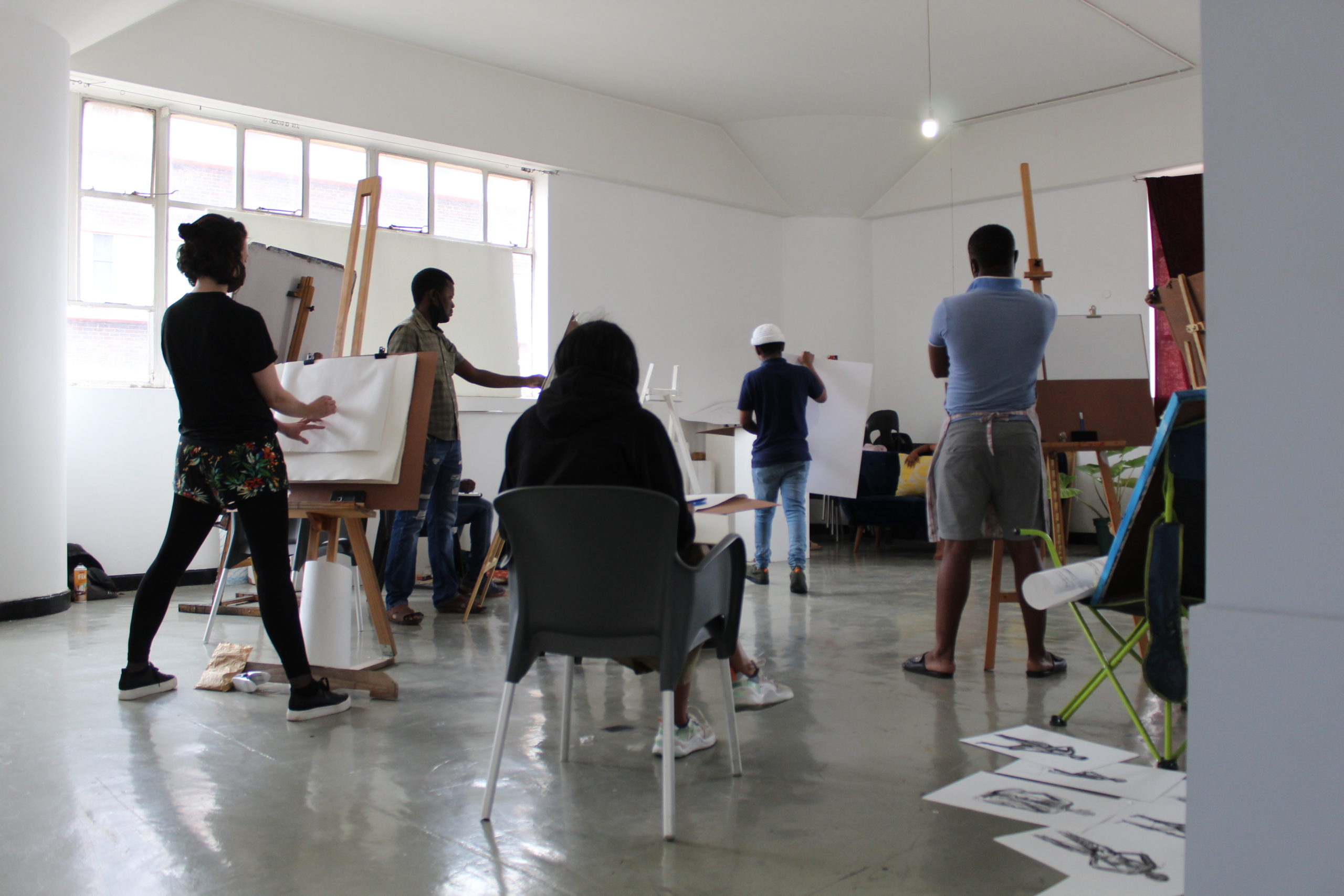
A live drawing class held to give the artists a chance to strengthen their live drawing skills.
Image courtesy of META foundation.
Our hope is that through development,
support and education about the system and the market,
artists will be better prepared
to cope with the challenges
of being an artist and having to eat.
SS: The META foundation aims to speak to what you have described as the three pillars that make up the visual arts ecosystem – “the artist”, “the artwork” and “the audience”. What are some of the ways the foundation considers each pillar, and how to bring them together?
SH: The art world thrives on cross pollination and engagement. In other words, none of these pillars can successfully exist without the other. The artist is seen as the heart of it all. We need people who are interested in creation, experimentation and pushing of boundaries to create great work. The artwork refers to the physical item itself and the best possible iteration of that work. In very developed markets, where audiences and institutions are regular participants in the system, the artwork comes under heavy scrutiny. Not every work produced by an artist will be their finest. This is the nature of anything handmade. We are looking at how we can make the work, the best possible work. This area focused on technical ability, critical assessment and engagement and feedback. While the concept of audience is somewhat self-explanatory, we would like to work to provide audiences with more insight so that they themselves are able to discern well developed technical ability and thoroughly considered concepts. We are able to bring these separate but interlinked areas together through our unique position of being in the studio. This gives new insight and access to audiences which may not be possible in other structures or institutions.
SS: How would you describe the importance of non-profit arts spaces such as META foundation within the larger arts ecosystem in Johannesburg (or South Africa more broadly)?
SH: They are fundamental. Many young artists, either self-taught or university educated are unsure how to approach being a full-time professional practicing artist, whilst surviving. The gallery system is designed to work with artists that have managed to develop a seller base and the museum system mostly rewards excellence in the industry (which tends to come after many years of being a practicing artist). This means that there is a big gap between the artist starting out and the artist represented at a gallery or in an art fair. In order to ensure that there is a strong base of emerging artists, spaces like the META foundation, the AVA, KZNSA, the Bag Factory and many others contribute to providing safe spaces for their development.

A live drawing class held to give the artists a chance to strengthen their live drawing skills.
Image courtesy of META foundation.
SS: So far your programming has included exhibitions, open studios, cultural exchanges and workshops. How have artists and audiences responded to these interventions and invitations? Perhaps you would like to draw on a specific moment?
SH: Whilst we are newcomers on the visual arts landscape, we have used our knowledge of the industry to address problems that are recurring. Of course, this has been made very difficult to do in the time of a global pandemic with much uncertainty around the best ways to get to audiences, what audiences are doing and where their spending habits might have changed. Our projects have focused on our three pillars which we deem to be the artist, the artwork and the audience. What we have noticed is that our projects are getting traction. This can be seen through the levels of engagement we have experienced, especially through digital media. Our recent open studios also saw an increase in visitor numbers.
SS: How do you hope to position META foundation within the South African arts context as it grows?
SH: My hope is that the META foundation becomes a valuable part of the South African arts context through the impact its projects have. The word META is defined as: “referring to itself or to the conventions of its genre; self-referential”. Our hope is that the foundation is always looking at itself and the visual arts to find “whys” to question, improve and take chances. I hope that we manage to be a cutting-edge institution African institution.
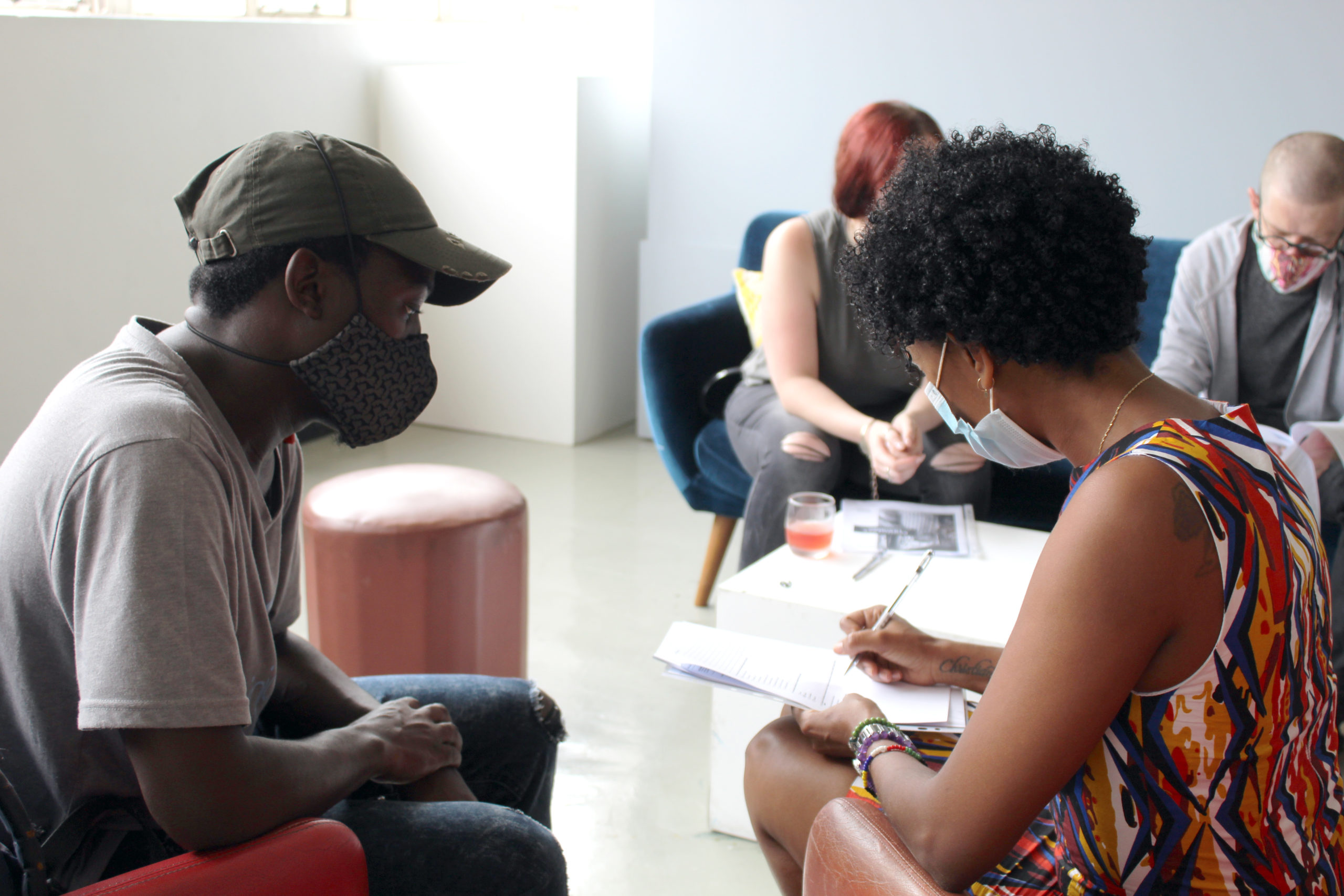
E-Commerce workshop.
Image courtesy of META foundation.
SS: Would you like to share the framing for your current longer form programming The Problem with African contemporary art is…?
SH: This project and its topic arises out of a series of discussions with colleagues around why African art has been awarded its own epithet. From there, the discussion progressed on what it means to be African. In short, the project wants to unpick where African Contemporary Art sits within the current global and continental context using the statement “The problem with African contemporary art is…” as its starting point. We want to reflect on why it is for years the Continent has been left out of serious debate and consideration regardless of our obvious talent. In recent years there has been a lot of excitement about African work, with many private collectors and institutions rushing to join what has been touted as “an African moment”. The project will seek to cross pollinate across the production of art, the development of artists, the access to markets as well as supporting and developing of arts writers in the section. Through a series of activities, the project aims to ask the following questions:
– What has created this moment in the world and what does it mean?
– How do we protect ourselves from being taken advantage of?
– How can we find our own voice in this moment, created externally?
– Are we just being placated by the world and we will once again end up being unconsidered in years to come?
– How do we take a leadership role in this question?
The project covers artistic production, mentorship, academic thought leadership and writing and will result as an online portal towards the end of July 2021 [Click here to access the online portal]. Depending what transpires with Covid, we are likely to hold the physical exhibition for this project in September.
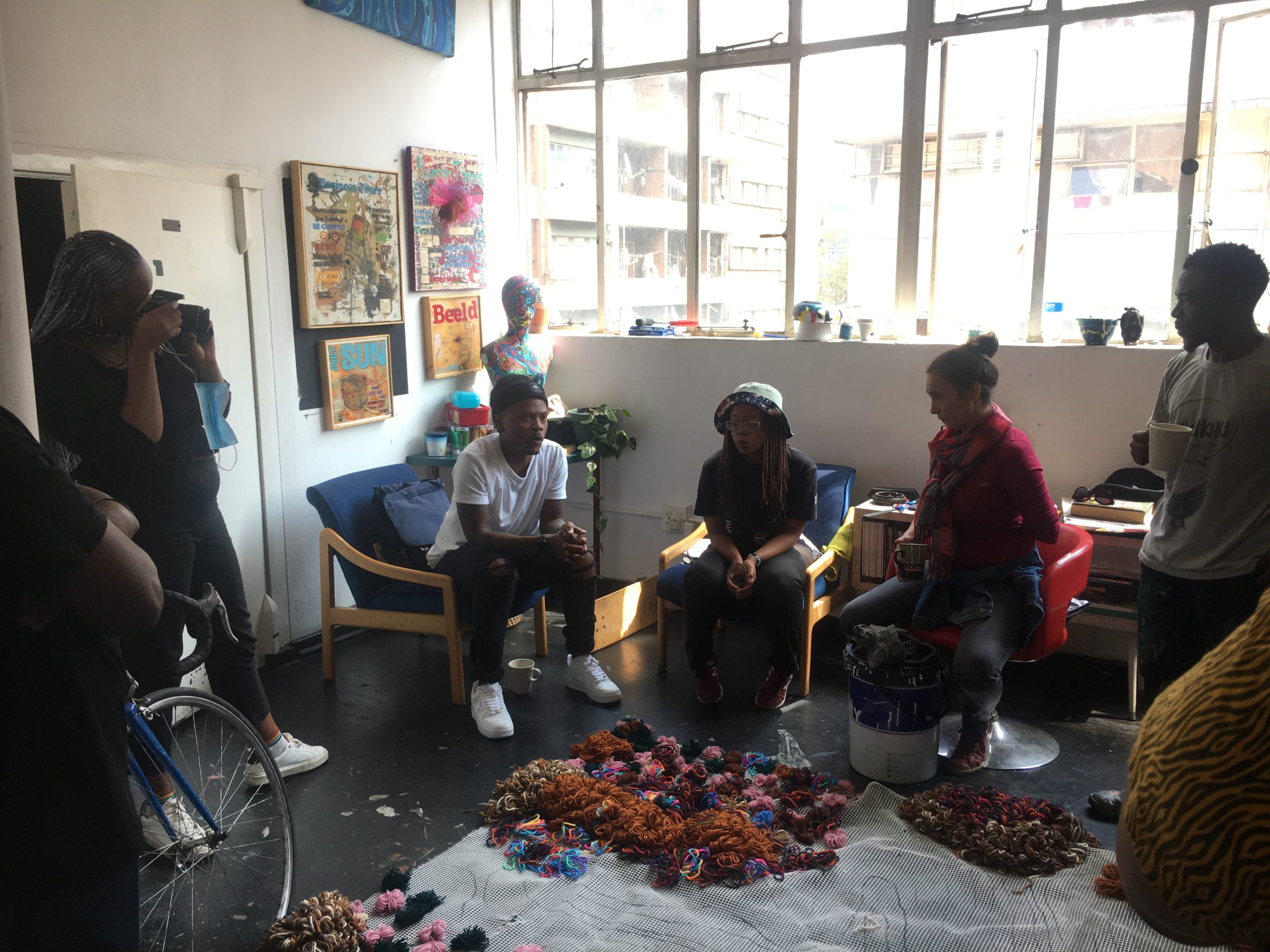
End Street Studios crit session.
Image courtesy of META foundation.
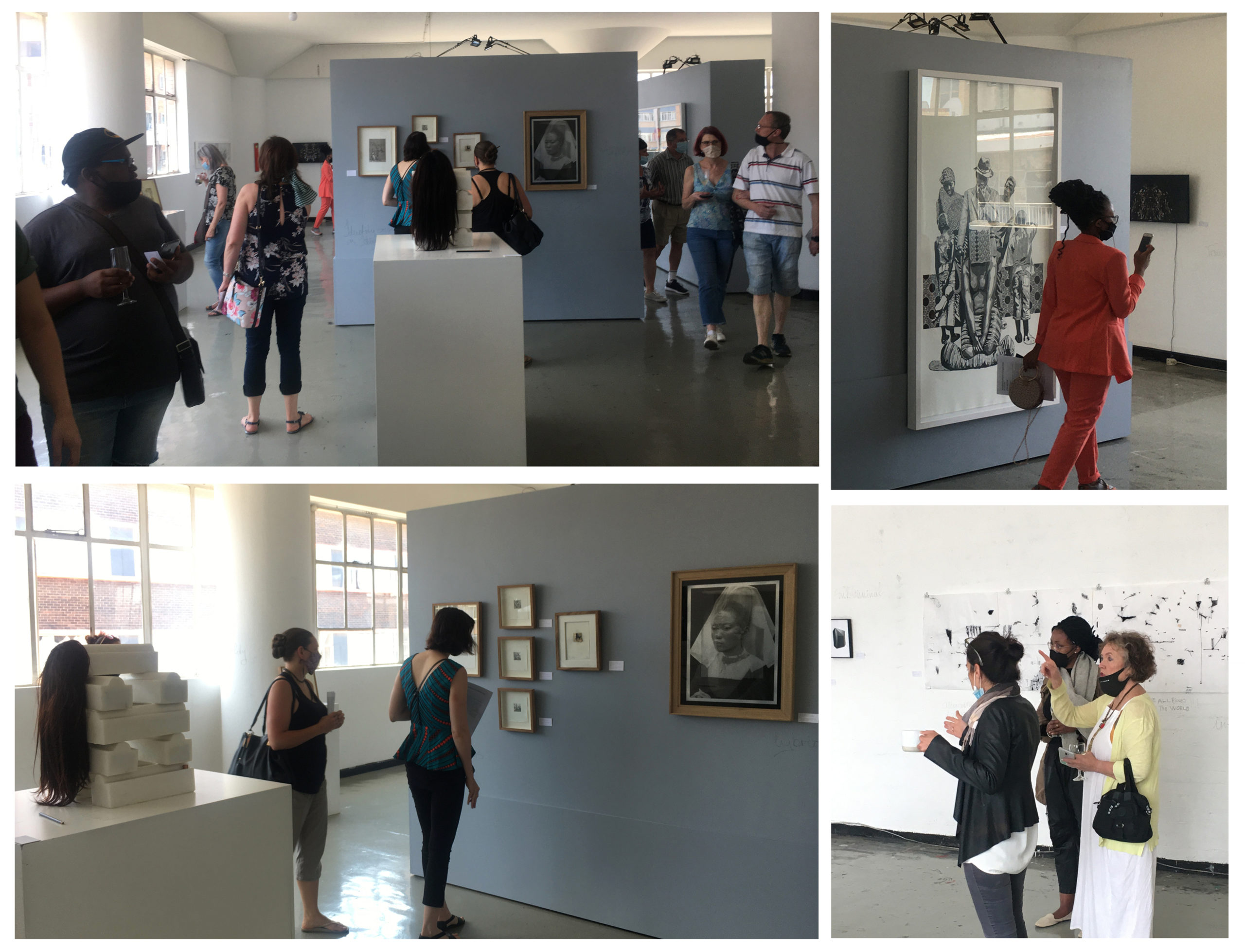
Exhibition Opening, An Exhibition in Several Acts | A Lexigram of Ideas.
Image courtesy of META foundation.
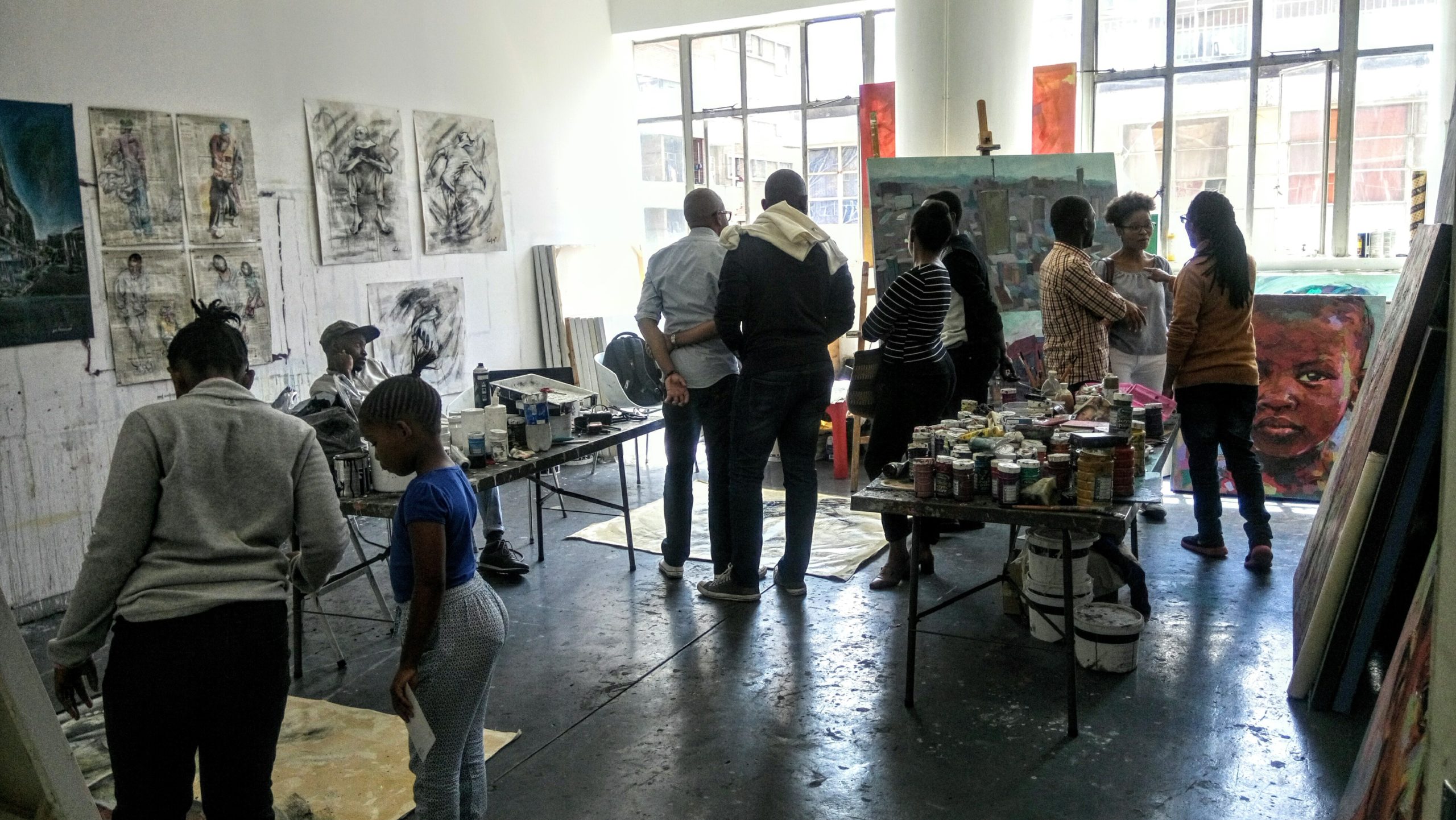
Open Studios at August House.
Image courtesy of META foundation.
CREDITS
Images courtesy of META foundation, with special thanks to Director Sara Hallatt.
Click here to visit the META foundation Facebook page.
Click here to visit the META foundation Instagram account.
Click here to access the August House website.
Click here to view the online portal for the project The Problem with African contemporary art is…
